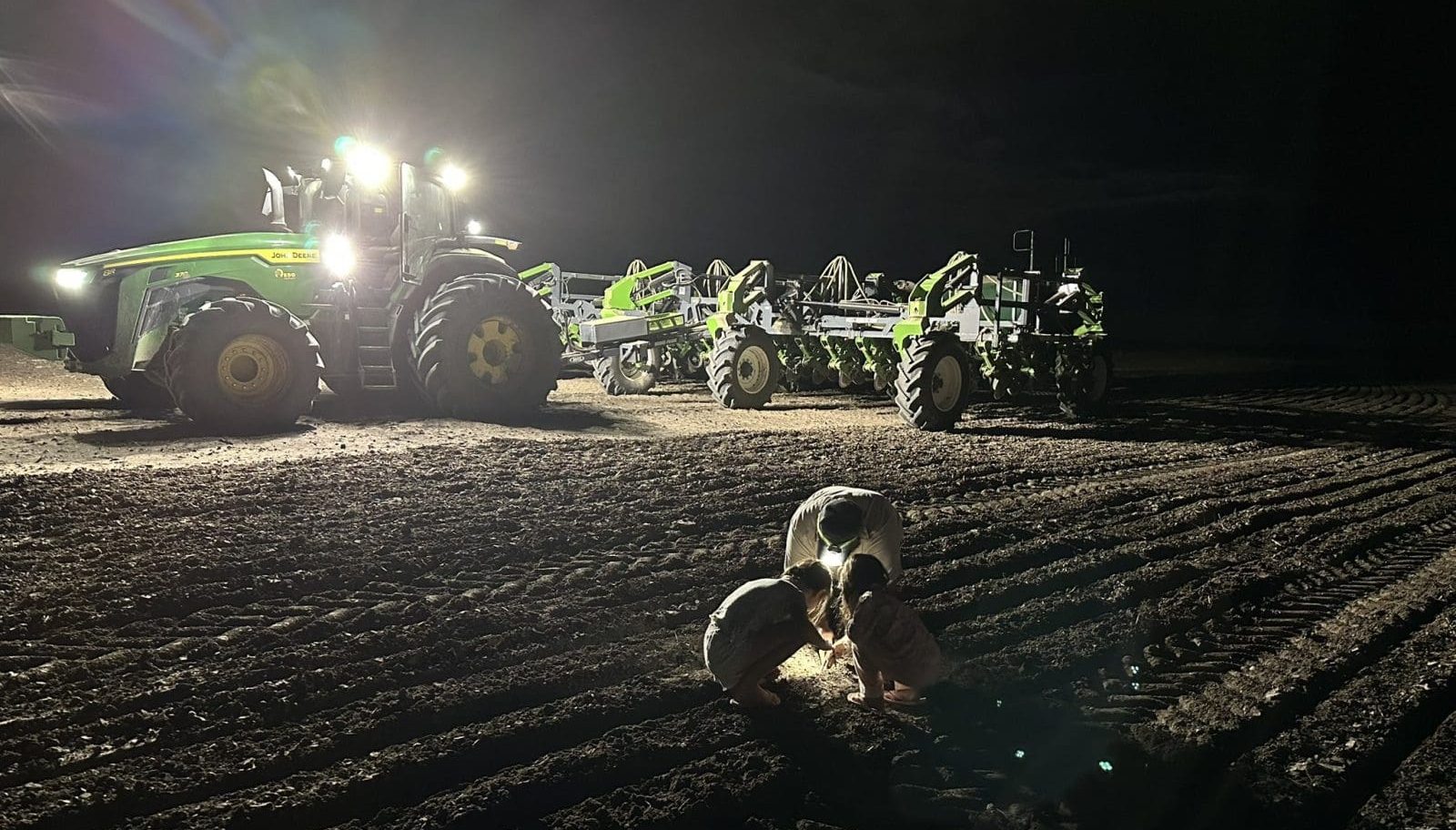
Growers across eastern Australia, including this one in northern NSW pictured with a couple of junior advisors, are flat out sowing winter crop. Photo: Tom Luff
SOLID export demand for wheat and barley in the southern market, and an uptick in consumer demand in the north, have seen prices firm in the past week.
With growers busy planting winter crops in the south, and harvesting summer crops in the north, grower interest in selling loads of grain from on-farm stocks is minimal.
Coupled with solid export demand, this has seen white grain prices lift $8-$10/t, while sorghum values soften as new-crop supply lifts after a lengthy rain delay for some.
| Today | Apr 18 | |
| Barley Downs | $405 | $395 |
| ASW wheat Downs | $395 | $390 |
| Sorghum Downs | $353 | $355 |
| Barley Melbourne | $352 | $345 |
| ASW wheat Melbourne | $363 | $355 |
Table 1: Indicative prices in Australian dollars per tonne.
North
Rates for barley and wheat have firmed further in the north in the past week in a bid to attract some selling from growers, many of whom are busy with a rain-delayed summer-crop harvest.
“Growers I’ve spoken to have no interest in selling old-crop grain; they’re getting summer crops off and winter crops in,” one trader said.
Not wanting to add to the taxable income is a further consideration for some growers, who are offering new-crop loads of sorghum through brokers for sale after July 1.
“Offers on barley are pretty hard to come by; wheat’s got a bit more liquidity.”
On the production front, growers are preparing to plant wheat and barley into enforced long fallow created by last year’s dry season, or double crop after grain or forage sorghum coming off now.
While the Darling Downs still has considerable areas of rain-affected sorghum to harvest, most of the crop in the Goondiwindi region and on the Western Downs is off.
The first cargo on new-crop sorghum is booked to load 30,000t in Brisbane next week.
Trade sources say it has already been accumulated, and another two or three are pencilled in over May and June.
SORs, which allows up to 20pc sprouting sorghum but is otherwise of top-grade specs, is trading at a discount of around $30-35/t.
While feedlots are not putting up their hands for SORs, it is going into mono-gastric diets as sorghum pushes into rations.
“With wheat nudging $400/t, sorghum is looking cheap,” Robinson Grain Toowoomba-based trader Anthony Furse said.
Demand from feedlots for wheat and barley has picked up.
“We’re at that time of year when consumers are running out of coverage, and need to buy May forward.
“We’ve run out of barley in northern NSW and Qld, and growers in the Central West and southern NSW are too busy putting canola in to be selling it.”
With north-south road freight affordable and available, southern stocks are expected to flow into Qld feedlots in coming months.
South
Most growers in Victoria and southern NSW have made a solid start on their winter-crop planting program, and are sorry to see the eight-day forecast holds no hope for a well-timed soaking rain.
In Victoria, GeoCommodities broker Brad Knight said the variation on planting progress appears to be wide.
“There’s probably a subset that hasn’t started, and other people might be 80 percent planted,” Mr Knight said.
“I’d say on average, they’re over half done in the Mallee, and the Wimmera is a bit under that.”
While consumer hands are popping up for deliveries from June forward, growers have minimal appetite to sell while they are in the midst of sowing.
In southern NSW, Peters Commodities trader Peter Gerhardy said some growers need more rain, and soon, to keep planting.
“Another shower of rain would be very handy,” Mr Gerhardy said.
“Some are on a knife’s edge with moisture, and are thinking about pulling up if it doesn’t rain, but don’t get me wrong; they’re off to a great start.”
Most growers are sowing canola and lupins now, and also dual-purpose wheat and barley.
Meanwhile, domestic demand has picked up.
“There are consumer bids around now; a month ago there weren’t.”
Volume for the local market is largely coming out of warehousing sites, an easier option for growers to hit current prices without the inconvenience of having to out-turn loads in the middle of planting.
Grain Central: Get our free news straight to your inbox – Click here



HAVE YOUR SAY